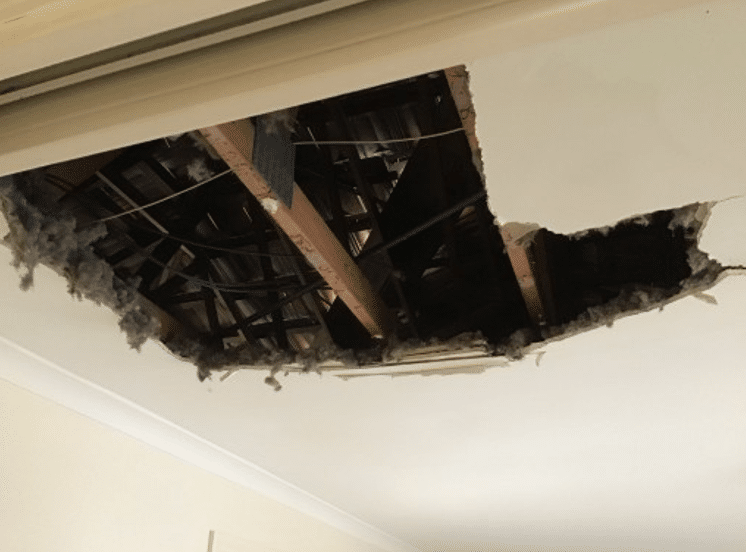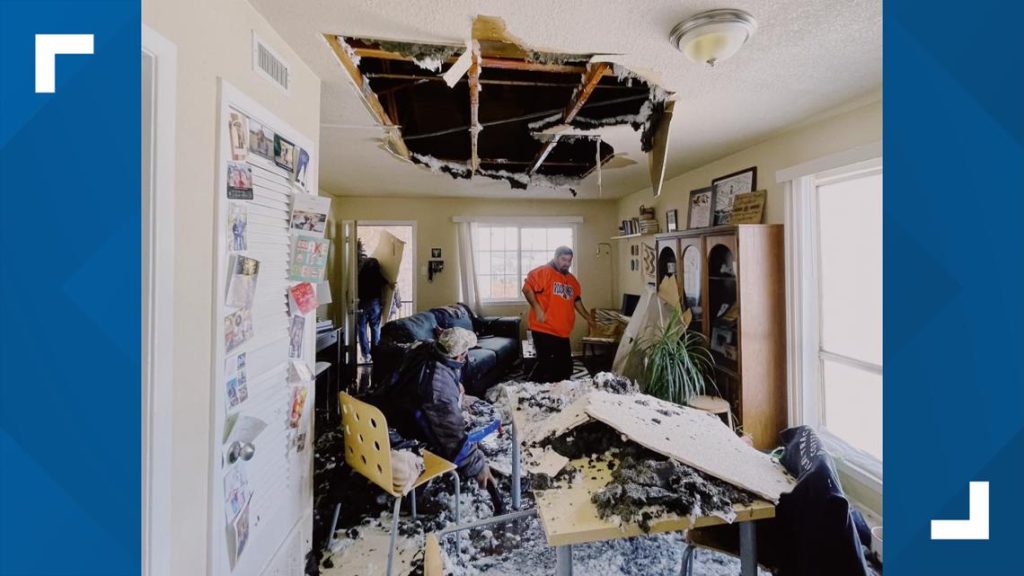Experiencing toilet overflow water damage to the ceiling below can be a homeowner’s worst nightmare. In this comprehensive guide, we’ll delve into the causes behind this issue, explore preventive measures, and outline steps to effectively deal with the aftermath.

Understanding Toilet Overflow Water Damage to Ceiling Below
What Causes Toilet Overflow Water Damage?
Toilet overflow water damage to the ceiling below can occur due to various factors, including:
- Clogged Drain: A blockage in the toilet’s plumbing system can cause water to back up and overflow, leading to damage to the ceiling below.
- Faulty Toilet Components: Malfunctioning toilet components such as the fill valve, flapper, or float can result in continuous water flow, eventually causing an overflow.
- Sewer Line Issues: Problems with the sewer line, such as blockages or backups, can cause water to flow back into the toilet and overflow.
Signs of Toilet Overflow Water Damage
Identifying signs of toilet overflow water damage to the ceiling below is crucial for prompt intervention. Look out for the following indicators:
- Water stains or discoloration on the ceiling
- Sagging or bulging ceiling tiles
- Dampness or moisture in the affected area
- Peeling paint or wallpaper
Read too: Exploring Craftsman Style Ceiling Fans for Your Home: Embracing Timeless Elegance
Preventive Measures to Avoid Toilet Overflow
Regular Maintenance
- Schedule routine inspections of your toilet’s plumbing system to detect and address any leaks or issues promptly.
- Avoid flushing non-biodegradable items such as wipes, paper towels, or hygiene products down the toilet to prevent clogs.
Upgrade Toilet Components
- Install a toilet overflow prevention device, such as an automatic shut-off valve, to stop water flow in the event of an overflow.
- Consider upgrading to a modern, water-efficient toilet with advanced flushing mechanisms to minimize the risk of overflow.
Dealing with Toilet Overflow Water Damage
Step 1: Stop the Water Source
- Turn off the toilet’s water supply by locating the shut-off valve near the base of the toilet and turning it clockwise.
Step 2: Assess the Damage
- Inspect the extent of the water damage to the ceiling below, including any structural issues or electrical hazards.
Step 3: Dry and Clean the Affected Area
- Use towels, mops, or a wet/dry vacuum to remove excess water from the floor and ceiling.
- Thoroughly clean and disinfect the affected area to prevent mold and mildew growth.
Step 4: Repair and Restoration
- Repair any plumbing issues contributing to the overflow, such as clogs or faulty components.
- Replace damaged ceiling tiles, drywall, or insulation as needed to restore the integrity of the ceiling below.
Conclusion
Dealing with toilet overflow water damage to the ceiling below requires swift action and thorough remediation to prevent further structural damage and mold growth. By understanding the causes, implementing preventive measures, and taking prompt steps to address the issue, you can effectively mitigate damage and restore your home’s safety and comfort.

